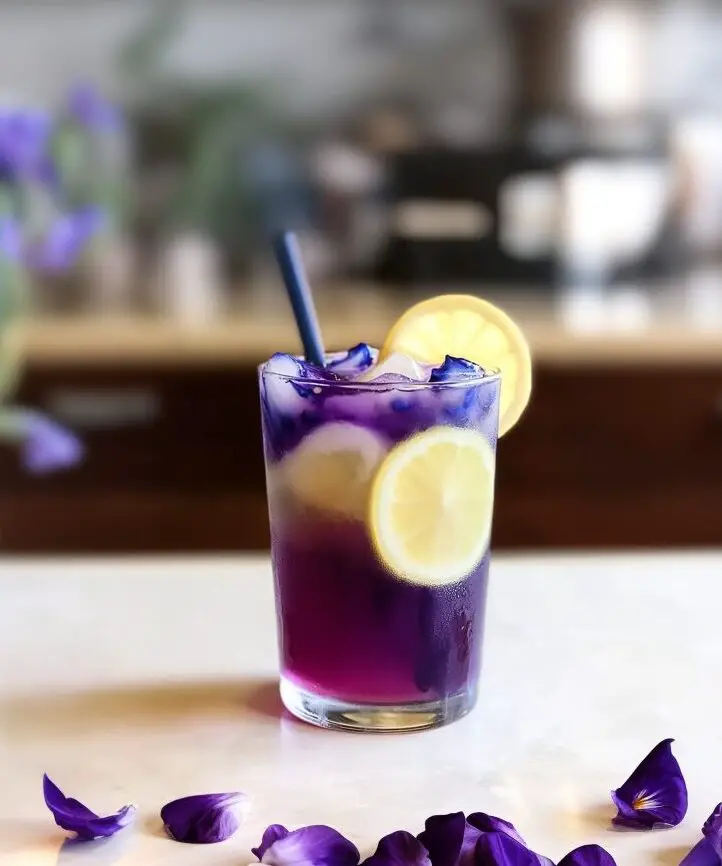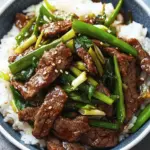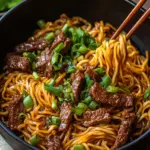A magical, color-changing drink that’s both refreshing and Instagram-worthy! This Butterfly Pea Flower Lemonade is a caffeine-free herbal drink made from butterfly pea flowers, lemon juice, and simple syrup. It starts off blue and transforms into a vibrant purple when lemon is added—perfect for impressing guests or enjoying a whimsical refreshment at home.
Full Recipe:
Ingredients
- 1 tablespoon dried butterfly pea flowers
- 1 cup hot water
- 1 cup cold water
- 2 tablespoons lemon juice (freshly squeezed)
- 2 tablespoons simple syrup (adjust to taste)
- Ice
Directions
- Brew the butterfly pea flower tea: In a heatproof cup or bowl, steep 1 tablespoon of dried butterfly pea flowers in 1 cup of hot water for about 5 minutes until the color turns a deep blue. Strain out the flowers.
- Cool down the tea: Let the brewed tea cool slightly before adding it to your serving glass filled with ice.
- Mix the lemonade: In another cup, combine 1 cup cold water, 2 tablespoons lemon juice, and 2 tablespoons simple syrup. Stir well.
- Combine and enjoy the color change: Slowly pour the lemonade mixture into the glass with the blue tea and ice. Watch as the color shifts from blue to vibrant purple or pink!
- Serve immediately and enjoy your magical, refreshing drink!
Nutrients (Per Serving – Approximate)
- Calories: 60 kcal
- Carbohydrates: 16g
- Sugar: 14g
- Fat: 0g
- Protein: 0g
- Fiber: 0g
- Vitamin C: ~15% of the Daily Value
- Sodium: 5mg
Why the Color Change Happens: The Science Behind the Magic
One of the most captivating features of butterfly pea flower lemonade is its dramatic color transformation from deep blue to vivid purple or pink when lemon juice is added. This color change is due to the presence of anthocyanins — natural pigments found in the butterfly pea flower. Anthocyanins are pH-sensitive molecules, meaning their color changes depending on the acidity or alkalinity of their environment.
In a neutral or slightly alkaline solution, anthocyanins maintain their blue color. However, when an acidic component like lemon juice is introduced, the pH lowers, causing the anthocyanins to shift to a purple or pink hue. This natural reaction creates a fun, interactive drinking experience that is both visually stunning and completely natural.
Health Benefits of Butterfly Pea Flower
Besides its aesthetic appeal, the butterfly pea flower is packed with antioxidants and has been used for centuries in traditional medicine. Antioxidants help neutralize harmful free radicals in the body, which can reduce inflammation and the risk of chronic diseases. Some of the health benefits associated with butterfly pea flower consumption include:
-
Anti-inflammatory properties: Butterfly pea flower may help reduce inflammation in the body, supporting overall health.
-
Cognitive support: Some studies suggest that extracts from the flower may improve memory and brain function.
-
Skin and hair health: Traditionally, it has been used to promote healthy skin and hair due to its antioxidant content.
-
Anti-anxiety effects: It is believed to have calming properties, making it useful for stress relief.
While these benefits are promising, it’s important to remember that butterfly pea flower lemonade is not a substitute for medical treatment but rather a healthy, enjoyable beverage option.
Cultural Significance and Culinary Uses
The butterfly pea flower has a long-standing history in Asian cuisine and culture. In Thailand, for instance, it is commonly used to brew tea and color rice dishes, desserts, and drinks. Its unique ability to change color with the addition of lime or lemon juice has made it a popular choice for festive and ceremonial foods, symbolizing transformation and good fortune.
Beyond beverages, the flower is used as a natural food coloring in desserts such as rice cakes and jellies. In Malaysia, it colors the famous Nasi Kerabu, a blue rice dish served with savory sides. These culinary applications highlight the flower’s versatility and deep-rooted cultural importance.
The Growing Popularity in Modern Mixology and Wellness
In recent years, butterfly pea flower lemonade has gained popularity worldwide as part of a growing interest in natural, functional, and visually appealing beverages. Mixologists and wellness enthusiasts alike have embraced this ingredient for its color-changing magic and health benefits.
You’ll often find it featured in cafes and bars as a non-alcoholic specialty drink or as a cocktail ingredient, where the vibrant color change adds a dramatic flair to presentations. It fits perfectly into the trend of botanical and herbal drinks that emphasize natural ingredients and unique sensory experiences.
Wellness-focused consumers appreciate that it is caffeine-free, low in calories, and free from artificial dyes and preservatives. It provides a refreshing alternative to sugary sodas or artificially colored beverages, making it a favorite for health-conscious individuals and families.
How to Incorporate Butterfly Pea Flower Lemonade into Your Lifestyle
Butterfly pea flower lemonade is incredibly versatile. It can be served chilled on hot days for a refreshing pick-me-up or used as a base for creative mocktails and cocktails. Its subtle earthy flavor pairs well with citrus, mint, and even ginger, allowing you to customize the drink to your taste.
Because it is caffeine-free, it’s suitable for all ages and a great option for social gatherings, family events, and even as a special treat for children. It’s also easy to make at home, requiring only a few simple ingredients, making it accessible for anyone interested in experimenting with natural, colorful drinks.
If you want to add an extra nutritional boost, you can combine it with ingredients like honey for sweetness or fresh herbs for aroma and additional health benefits. Its visual appeal also makes it an excellent choice for parties and celebrations, where the color change can serve as a conversation starter.
Environmental and Sustainability Aspects
Using butterfly pea flower as a natural colorant aligns with growing environmental awareness about the use of synthetic food dyes. These artificial dyes often have negative environmental and health impacts, whereas butterfly pea flower is a renewable, plant-based alternative. The flower itself is easy to cultivate, grows well in tropical climates, and does not require extensive resources. Supporting its use helps promote sustainable agriculture and encourages a return to traditional, eco-friendly food practices.
Conclusion
Butterfly pea flower lemonade is much more than a beautiful beverage—it’s a drink that connects culture, nature, science, and wellness in a single glass. Its stunning color transformation captivates the eye, while its healthful properties and caffeine-free nature make it a smart choice for anyone seeking a refreshing, natural drink.






